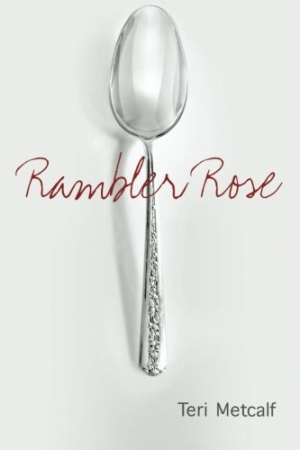Rambler Rose
Readers of Metcalf’s age will appreciate these reminiscences of the past.
Teri Metcalf’s memoir, Rambler Rose, is a wandering documentation of her coming of age in California. Born in 1943, Metcalf chronicles her growth from a young child until her first marriage in 1966, sharing both the humor and pain of those twenty-some years within a running history of her parents, grandparents, stepparents, siblings, and other miscellaneous family members.
Amid multiple moves, marriages and divorces, affairs and abuse, Metcalf paints a picture of a family tree challenged both by secrets and by the particular issues of US history at the time—from class and race to gender and sexuality.
While her relatives and close friends will probably enjoy the level of detail and the list-like chronologies inserted about specific members of her clan, the writing lacks enough of a story arc to keep the interest of those who don’t know her. And it’s unfortunate, because in places where she touches on social issues (many of which we are still struggling with), she could have explored more deeply, thereby engaging a broader audience.
Aside from a greater emphasis on how historical events impacted Metcalf, two specific edits would make this a much stronger story. First, very basic activities are described in too much detail. For example, in part 2, it takes four pages to outline her father’s backyard project. From posthole digging, to pouring water for cement, to connecting fence posts, to rototilling, and so on, this section details each and every little movement that occurred.
Second, many of the quoted conversations use a constant stream of “he said/she said” attributions to begin each paragraph. For example, during a conversation with herself, her sister, and her Nana, Metcalf rotates among “Nana said,” “Lynn said,” and “I said” to begin most of the paragraphs for nearly two pages. In many ways, the dialogue in this book feels like a crutch that Metcalf relies on to tell her story, instead of using it to expand a scene’s immediacy, helping to show a situation in a different light, or allowing for more connection to a character.
The book itself is quite clean when it comes to errors. And the image of a spoon on the very simple cover is striking. The back cover copy is a little generic—“Girlfriends, boyfriends and lovers appear in supporting roles, along with an assortment of colorful relatives”—but it gets the basics across.
Those of Metcalf’s age who are looking to reminisce about the past will appreciate many of her tales and her references—from television shows she mentions, to clothing she wears, to even the book’s title and the pattern of silverware it recalls.
Reviewed by
Kirsten Akens
Disclosure: This article is not an endorsement, but a review. The publisher of this book provided free copies of the book and paid a small fee to have their book reviewed by a professional reviewer. Foreword Reviews and Clarion Reviews make no guarantee that the publisher will receive a positive review. Foreword Magazine, Inc. is disclosing this in accordance with the Federal Trade Commission’s 16 CFR, Part 255.

